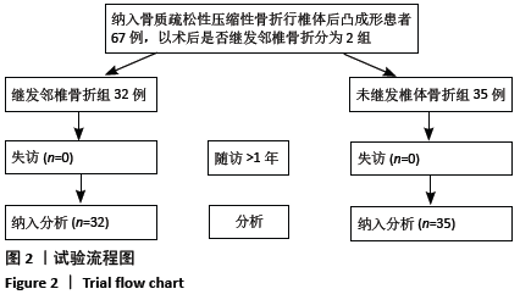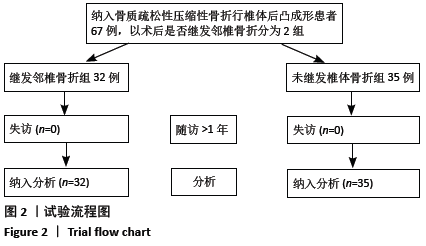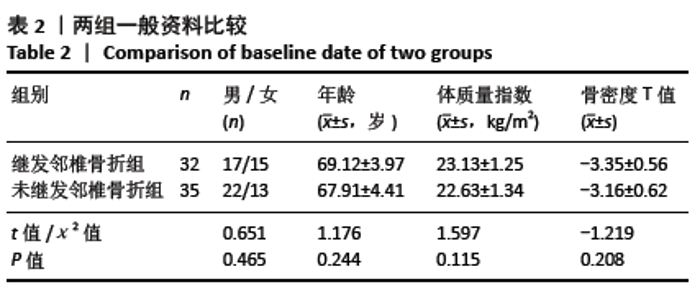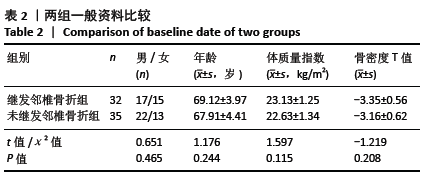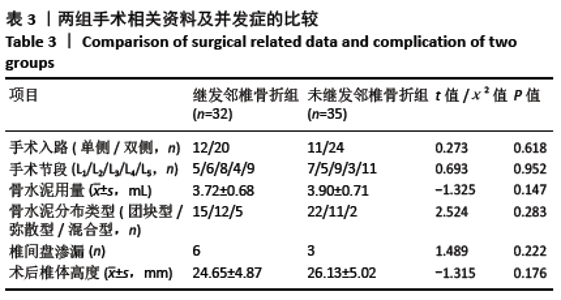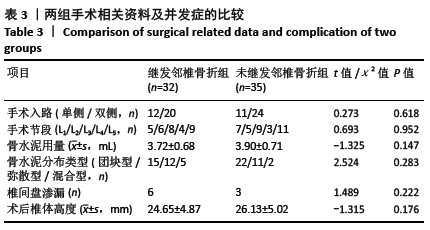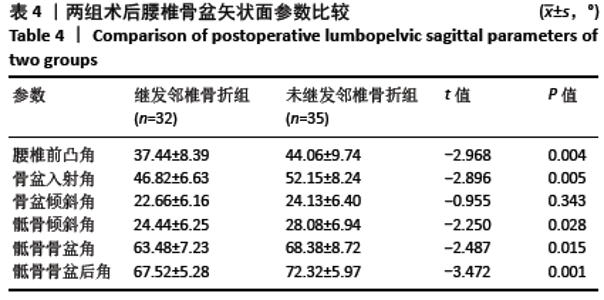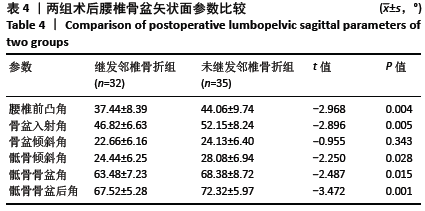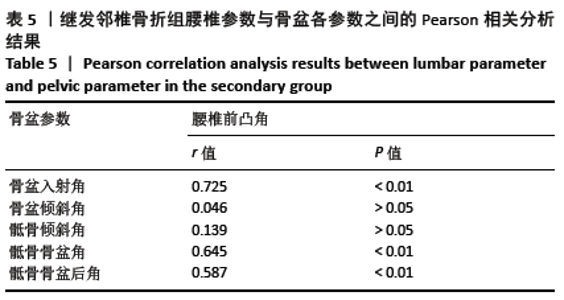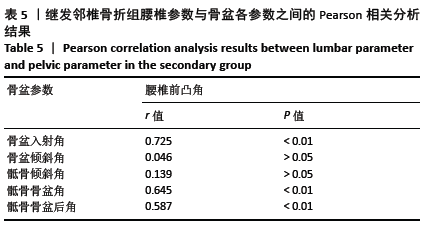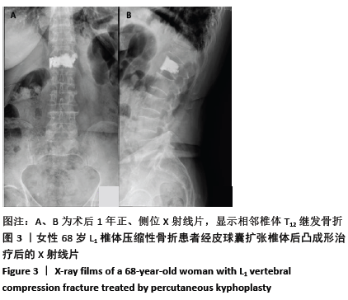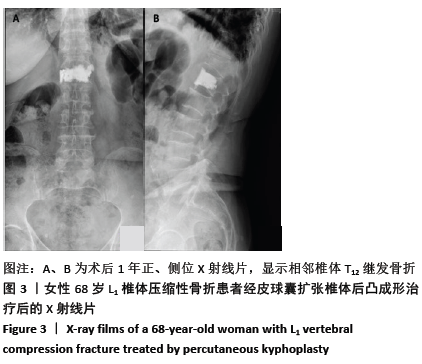[1] HOYT D, URITS I, ORHURHU V, et al. Current Concepts in the Management of Vertebral Compression Fractures. Curr Pain Headache Rep. 2020;24(5):16.
[2] MARCHENKOVA LA, MAKAROVA EV. Exercise therapy and bracing in patients with osteoporotic compression vertebral fractures. Vopr Kurortol Fizioter Lech Fiz Kult. 2019;96(4):69-75.
[3] ZHOU X, MENG X, ZHU H, et al. Early versus late percutaneous kyphoplasty for treating osteoporotic vertebral compression fracture: A retrospective study. Clin Neurol Neurosurg. 2019;180:101-105.
[4] TAN G, LI F, ZHOU D, et al. Unilateral versus bilateral percutaneous balloon kyphoplasty for osteoporotic vertebral compression fractures: A systematic review of overlapping meta-analyses. Medicine (Baltimore). 2018;97(33):e11968.
[5] 刘志强,雷飞,周云龙,等.骨质疏松性椎体压缩性骨折研究进展[J].国际骨科学杂志,2020,41(2): 90-94.
[6] CHEN C, FAN P, XIE X, et al. Risk Factors for Cement Leakage and Adjacent Vertebral Fractures in Kyphoplasty for Osteoporotic Vertebral Fractures. Clin Spine Surg. 2020;33(6):E251-e255.
[7] BAEK SW, KIM C, CHANG H. The relationship between the spinopelvic balance and the incidence of adjacent vertebral fractures following percutaneous vertebroplasty. Osteoporos Int. 2015;26(5):1507-1513.
[8] HARDING IJ. Understanding sagittal balance with a clinical perspective. Eur J Phys Rehabil Med. 2009;45(4):571-582.
[9] WANG W, WU M, LIU Z, et al. Sacrum pubic incidence and sacrum pubic posterior angle: two morphologic radiological parameters in assessing pelvic sagittal alignment in human adults. Eur Spine J. 2014;23(7): 1427-1432.
[10] BALLANE G, CAULEY JA, LUCKEY MM, et al. Worldwide prevalence and incidence of osteoporotic vertebral fractures. Osteoporos Int. 2017; 28(5):1531-1542.
[11] HU KZ, CHEN SC, XU L. Comparison of percutaneous balloon dilation kyphoplasty and percutaneous vertebroplasty in treatment for thoracolumbar vertebral compression fractures. Eur Rev Med Pharmacol Sci. 2018;22(1 Suppl):96-102.
[12] ZHAO DH, CHEN K, ZHU J, et al. Postoperative Functional Evaluation of Percutaneous Vertebroplasty Compared With Percutaneous Kyphoplasty for Vertebral Compression Fractures. Am J Ther. 2016; 23(6):e1381-e1390.
[13] WANG YT, WU XT, CHEN H, et al. Adjacent-level symptomatic fracture after percutaneous vertebral augmentation of osteoporotic vertebral compression fracture: a retrospective analysis. J Orthop Sci. 2014; 19(6):868-876.
[14] BERTHONNAUD E, DIMNET J, ROUSSOULY P, et al. Analysis of the sagittal balance of the spine and pelvis using shape and orientation parameters. J Spinal Disord Tech. 2005;18(1):40-47.
[15] BERVEN S, WADHWA R. Sagittal Alignment of the Lumbar Spine. Neurosurg Clin N Am. 2018;29(3):331-339.
[16] BORKAR SA, SHARMA R, MANSOORI N, et al. Spinopelvic parameters in patients with lumbar degenerative disc disease, spondylolisthesis, and failed back syndrome: Comparison vis-a-vis normal asymptomatic population and treatment implications. J Craniovertebr Junction Spine. 2019;10(3):167-171.
[17] 李博,胡文,杨明园,等.脊柱骨盆矢状面参数随年龄的变化[J].第二军医大学学报,2020,41(3):254-258.
[18] IWATA A, KANAYAMA M, OHA F, et al. Does spinopelvic alignment affect the union status in thoracolumbar osteoporotic vertebral compression fracture?. Eur J Orthop Surg Traumatol. 2017;27(1):87-92.
[19] GLASSMAN SD, BERVEN S, BRIDWELL K, et al. Correlation of radiographic parameters and clinical symptoms in adult scoliosis. Spine (Phila Pa 1976). 2005;30(6):682-688.
[20] ROUSSOULY P, PINHEIRO-FRANCO JL. Sagittal parameters of the spine: biomechanical approach. Eur Spine J. 2011;20 Suppl 5:578-585.
[21] MAC-THIONG JM, BERTHONNAUD E, DIMAR JR 2nd, et al. Sagittal alignment of the spine and pelvis during growth. Spine (Phila Pa 1976). 2004;29(15):1642-1647.
[22] BOULAY C, TARDIEU C, HECQUET J, et al. Sagittal alignment of spine and pelvis regulated by pelvic incidence: standard values and prediction of lordosis. Eur Spine J. 2006;15(4):415-422.
[23] VRTOVEC T, JANSSEN MM, LIKAR B, et al. A review of methods for evaluating the quantitative parameters of sagittal pelvic alignment. Spine J. 2012;12(5):433-446.
[24] FECHTENBAUM J, ETCHETO A, KOLTA S, et al. Sagittal balance of the spine in patients with osteoporotic vertebral fractures. Osteoporos Int. 2016;27(2):559-567.
|
